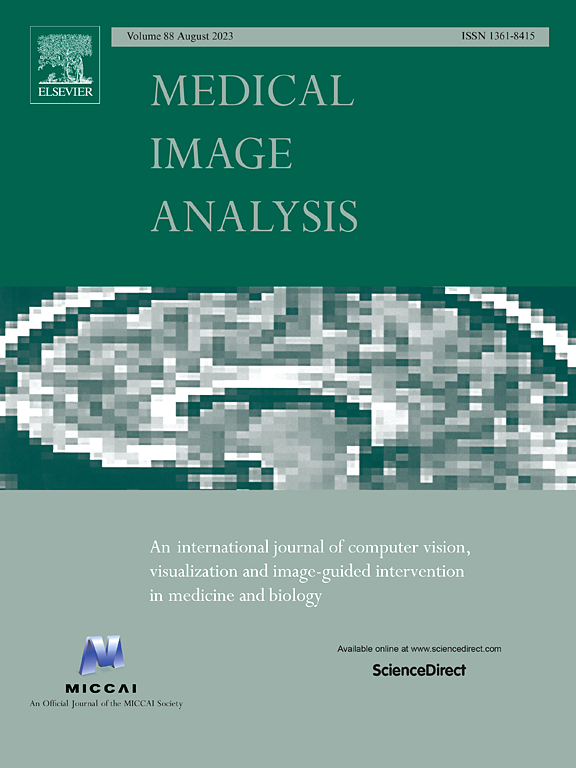The ULS23 challenge: A baseline model and benchmark dataset for 3D universal lesion segmentation in computed tomography
IF 10.7
1区 医学
Q1 COMPUTER SCIENCE, ARTIFICIAL INTELLIGENCE
引用次数: 0
Abstract
Size measurements of tumor manifestations on follow-up CT examinations are crucial for evaluating treatment outcomes in cancer patients. Efficient lesion segmentation can speed up these radiological workflows. While numerous benchmarks and challenges address lesion segmentation in specific organs like the liver, kidneys, and lungs, the larger variety of lesion types encountered in clinical practice demands a more universal approach. To address this gap, we introduced the ULS23 benchmark for 3D universal lesion segmentation in chest-abdomen-pelvis CT examinations. The ULS23 training dataset contains 38,693 lesions across this region, including challenging pancreatic, colon and bone lesions. For evaluation purposes, we curated a dataset comprising 775 lesions from 284 patients. Each of these lesions was identified as a target lesion in a clinical context, ensuring diversity and clinical relevance within this dataset. The ULS23 benchmark is publicly accessible at https://uls23.grand-challenge.org, enabling researchers worldwide to assess the performance of their segmentation methods. Furthermore, we have developed and publicly released our baseline semi-supervised 3D lesion segmentation model. This model achieved an average Dice coefficient of 0.703 ± 0.240 on the challenge test set. We invite ongoing submissions to advance the development of future ULS models.

ULS23挑战:计算机断层扫描中三维通用病灶分割的基线模型和基准数据集
随访 CT 检查中肿瘤表现的尺寸测量对于评估癌症患者的治疗效果至关重要。高效的病灶分割可以加快这些放射工作流程。虽然许多基准和挑战都针对肝脏、肾脏和肺部等特定器官的病灶分割,但临床实践中遇到的病灶类型多种多样,需要一种更通用的方法。为了填补这一空白,我们引入了 ULS23 基准,用于胸腹盆腔 CT 检查中的三维通用病灶分割。ULS23 训练数据集包含该区域的 38693 个病灶,其中包括具有挑战性的胰腺、结肠和骨骼病灶。为了进行评估,我们建立了一个数据集,其中包括来自 284 名患者的 775 个病灶。这些病变中的每一个都被确定为临床背景下的目标病变,从而确保了该数据集的多样性和临床相关性。ULS23 基准可在 https://uls23.grand-challenge.org 上公开访问,使全球研究人员能够评估其分割方法的性能。此外,我们还开发并公开发布了基线半监督三维病灶分割模型。该模型在挑战测试集上的平均骰子系数为 0.703 ± 0.240。我们诚邀各界人士为推动未来 ULS 模型的开发而不断提交论文。
本文章由计算机程序翻译,如有差异,请以英文原文为准。
求助全文
约1分钟内获得全文
求助全文
来源期刊

Medical image analysis
工程技术-工程:生物医学
CiteScore
22.10
自引率
6.40%
发文量
309
审稿时长
6.6 months
期刊介绍:
Medical Image Analysis serves as a platform for sharing new research findings in the realm of medical and biological image analysis, with a focus on applications of computer vision, virtual reality, and robotics to biomedical imaging challenges. The journal prioritizes the publication of high-quality, original papers contributing to the fundamental science of processing, analyzing, and utilizing medical and biological images. It welcomes approaches utilizing biomedical image datasets across all spatial scales, from molecular/cellular imaging to tissue/organ imaging.
 求助内容:
求助内容: 应助结果提醒方式:
应助结果提醒方式:


